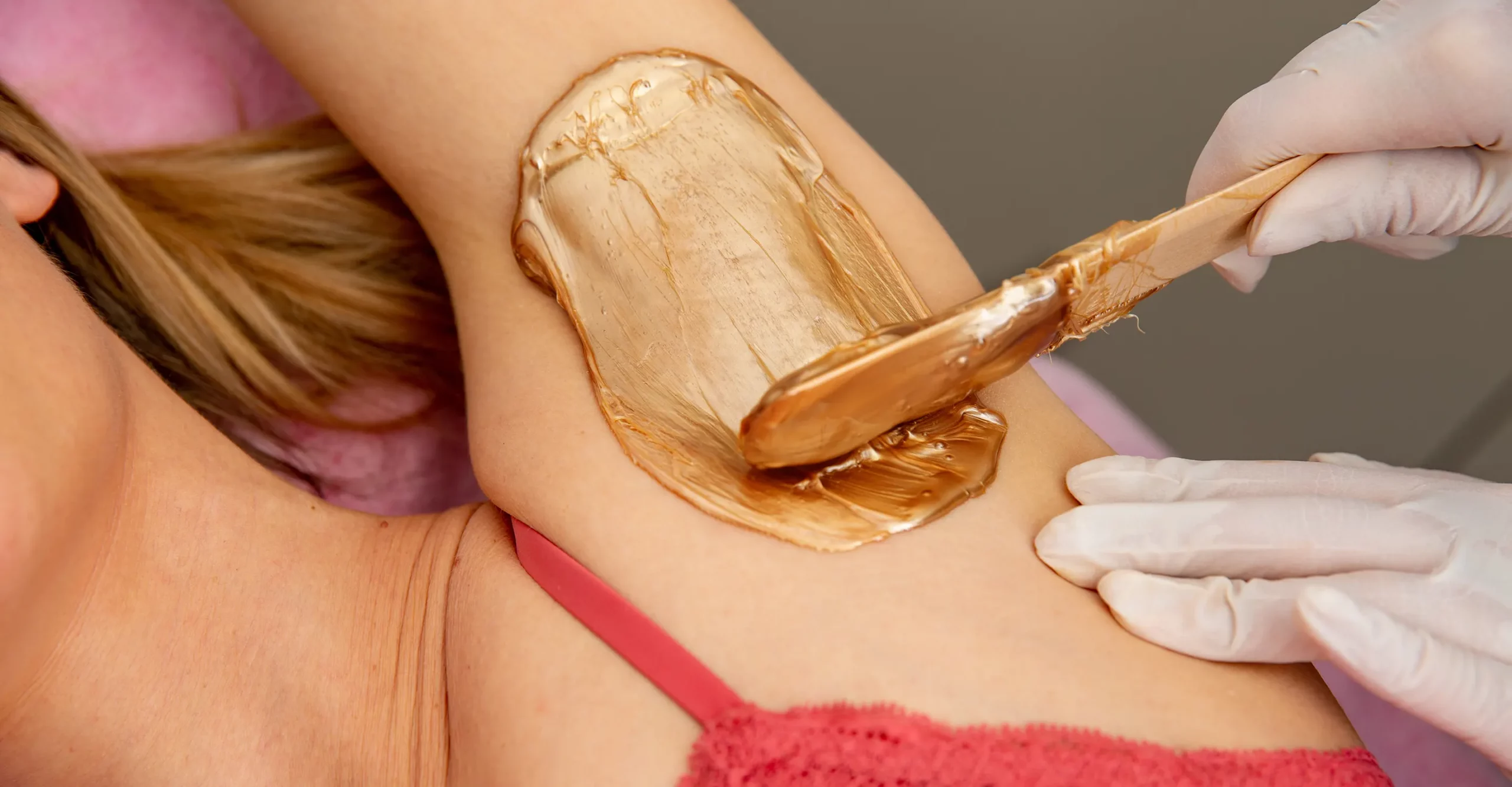How Long Does Hair Have to Be to Wax?
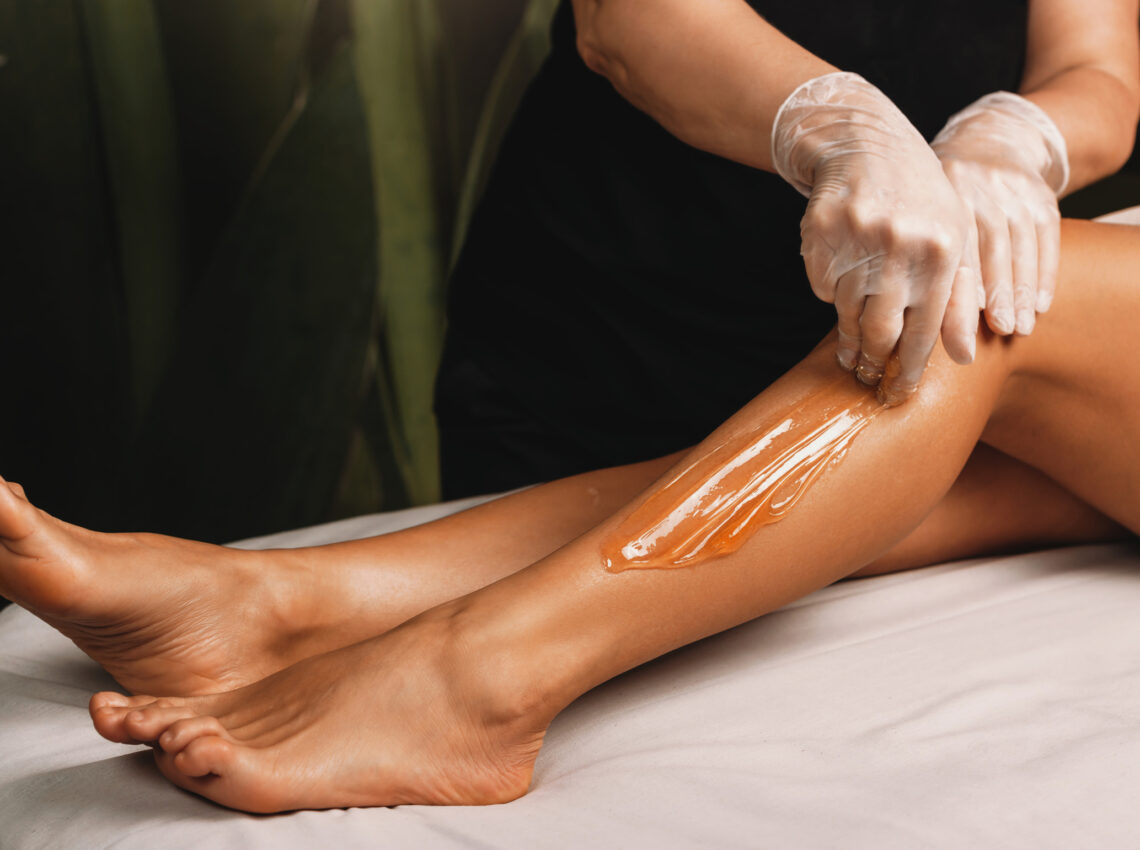
The goal of any waxing service is simple: to keep your skin smooth and hair-free for as long as possible. To do so, your hair needs to be the proper length to wax. The more you know about proper hair length, types of waxing products, and pre- and post-appointment care, the happier you will be with your waxing results.
How Long Does Hair Have to Be to Wax?
The ideal hair length for waxing is at least ¼-inch long — about the length of a grain of rice — but no more than ¾-inch long. Any shorter, and the wax can’t get a solid grip on the hair to be removed. Any longer, and the wax may miss spots, break hair rather than remove it, and cause more discomfort.
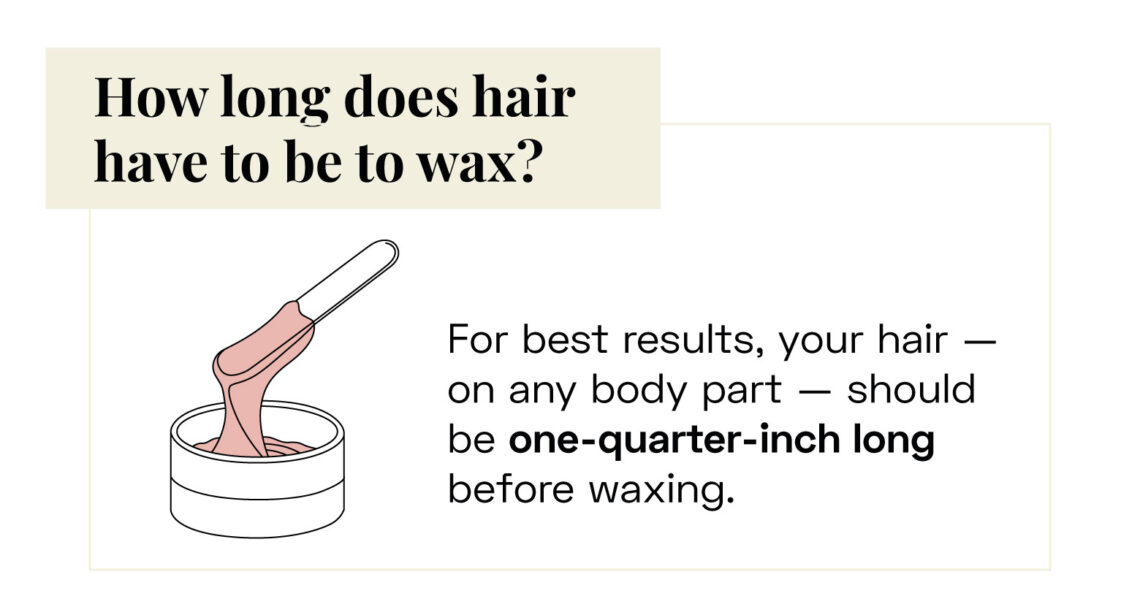
If you’re impatient between waxing appointments, you may wonder if you can wax stubble. Remember that unless your hair grows out to at least ¼ inch, you’ll have trouble achieving a smooth finish — not to mention having to start the waiting period all over before your next waxing session. While you can always trim longer hair, you simply have to leave time for shorter hair to grow prior to waxing.
Preparing for a Waxing Appointment
After you’ve waited for at least ¼ inch of hair growth, you may wonder how else to prepare for a professional waxing appointment. For starters, you’ll want to shower before your session and exfoliate your skin a day or two earlier.
To minimize pain, you may also wish to steer clear of alcohol before your appointment, avoid waxing during that time of month, and take a pain reliever beforehand if you’re especially sensitive. Finally, think about the rest of your day after the waxing service: wear comfortable (loose) clothing and don’t plan to head straight to the gym or beach.
How Long Does Waxing Last?
While the rate of hair regrowth varies by person and body region, the average waxing treatment lasts three to four weeks. The amount of time you can wait between appointments also depends on how long you’ve been waxing, how much the visible regrowth bothers you, and your budget.
Those new to waxing may find that a treatment doesn’t last as long as people who have been waxing for years. However, if waxing is your preferred hair removal method, you’ll achieve the best results by finding a waxing schedule that works for you and then sticking to it.
How long a waxing service lasts depends partially on the waxed area. Waxing sessions generally treat the following regions of the body:
- Underarms: Because regrowth is obvious in your armpits, especially if you wear tank tops or strapless dresses, you may want to wax every two weeks.
- Bikini area: If you’re hitting the beach regularly, you can have your bikini line waxed as often as every two weeks. For a full bikini wax or a Brazilian wax, you may want to space out your appointments to three or four weeks.
- Legs: You can schedule a waxing service on your legs every three to four weeks to allow for sufficient regrowth.
- Chest: You can also wax your chest about every six weeks.
- Butt: Sometimes included as part of a Brazilian wax, your rear end can be waxed every three to four weeks whether it’s part of a larger treatment or done separately.
- Face: Facial hair generally grows more quickly than hair on the rest of your body, so you’ll likely need to wax it every two to three weeks.
How Hair Growth Works
While you may think otherwise (especially between waxing appointments), your body hair grows more slowly than hair on your head, but all of your hair goes through the same four phases of growth:
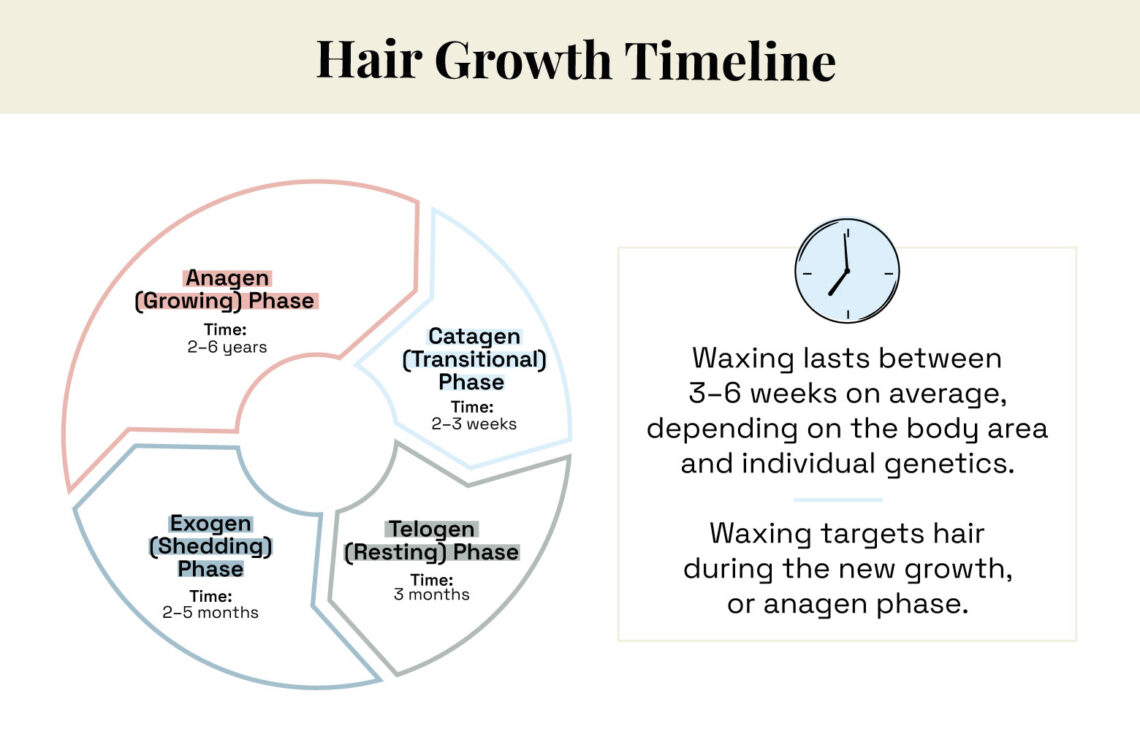
- Active: During the active phase, your hair is growing, and the length of this phase differs for different parts of your body — the hair on your head stays in the growth phase much longer than your eyebrows.
- Transitional: The transitional phase, lasting about two to three weeks, gives time for your hair to begin separating from the papilla, which supplies the hair root with blood.
- Resting: The supply of blood gets completely cut off during this phase, allowing the skin to start pushing the hair out over the course of a few months.
- Shedding: Like the name implies, the hair falls out during this phase, which can take several months to complete.
Although your hair goes through the same phases, they don’t go through the same phase at the same time. So when you wax it, your hair may grow back at different rates. For example, the hair that was already in the resting phase will grow back much quicker than hair in the active phase. So you may want to wax again when you see some hair coming back quicker in one area over another, but you still need to wait for all the hair to be the right length to achieve the look you want at your next appointment.
Each time you wax, pluck, or otherwise remove a hair from its root, you damage the hair follicle and may notice hair growing back softer and finer. Regular waxing may eventually stop your hair from coming back at all. Until that happens though, establishing a consistent waxing schedule is the best way to keep hair at bay. The ideal waxing timetable for you depends on your individual genes, the area of the body to be waxed, and your comfort level with hair regrowth between appointments.
Types of Wax
Although all waxing products are designed to remove hair, different wax formulas serve different purposes. The sheer variety of body waxes available might seem overwhelming. Here are some of the most common types of wax and their pros and cons.
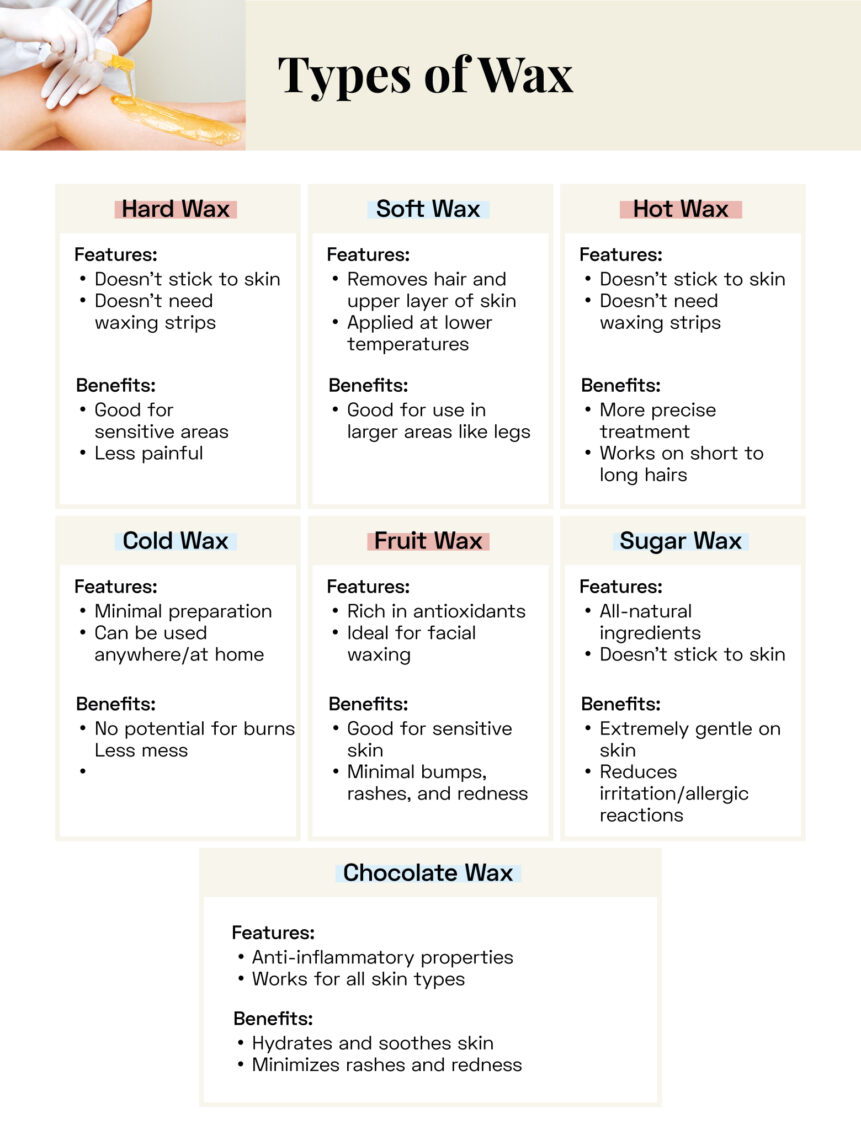
Hard Wax vs. Soft Wax
- Hard wax hardens around the hair follicles as it cools and serves as its own removal strip. Also known as stripless wax, hard wax tends to be less messy, often less painful, and better for shorter hair and more delicate areas of the body. If necessary, you can also reapply hard wax on the same area of the body in one waxing session.
- Soft wax is warmed and then spread on the skin in thin layers. Next, a strip of cloth is applied to the wax, which removes hair when pulled off. Soft wax adheres well to fine hair and makes a good option for larger areas of the body. However, people with sensitive skin may prefer hard wax over soft.
Hot Wax vs. Cold Wax
- Hot wax — which comes in both hard and soft varieties — requires special heating equipment and an experienced professional for application. It is often used at salons.
- Cold wax is sold in jars of soft wax as well as pre-made strips that can prove handy for home waxing. While cold waxes offer convenience and safety (there is no risk of burning), they may not remove hair as effectively as hot wax treatments. Some people also find cold wax more difficult to spread and more painful to remove than hot wax.
Other Types of Wax
Ideal for people with sensitive skin, these wax types incorporate natural ingredients to pamper the skin during waxing sessions.
- Fruit wax: A type of hard wax, fruit body wax adds fruit enzymes, antioxidants, and extracts — such as plum, pomegranate, and berries — that are beneficial for the skin. If you’re seeking an extra skin care boost, you may look for fruit wax at your next waxing service.
- Sugar wax: Technically not a wax, sugar waxing removes hair gently with a combination of sugar, lemon, and hot water. The sugar in this ancient recipe adheres to hair, pulling it out from the roots without sticking to the skin. A natural way to remove hair, sugar wax is ideal for people with sensitive skin.
- Chocolate wax: Not just for dessert anymore, chocolate now appears as a popular ingredient in skin care products. Loaded with antioxidants and soothing oils, chocolate wax has hydrating and anti-inflammatory properties that make it appealing for skin that is prone to redness.
Waxing Aftercare Instructions
For the first few days after waxing, your skin will likely be sensitive and vulnerable to irritation. Try to avoid the sun, swimming, saunas, baths, and any exercise that involves friction or makes you sweat. Because waxing treatments exfoliate your skin, avoid using additional exfoliants immediately after a session. After the first few days, however, exfoliation can help avoid ingrown hairs and is encouraged. Finally, choose delicate post-wax products and routines: no spray tans, harsh skin care ingredients, or strong fragrances for a few days.
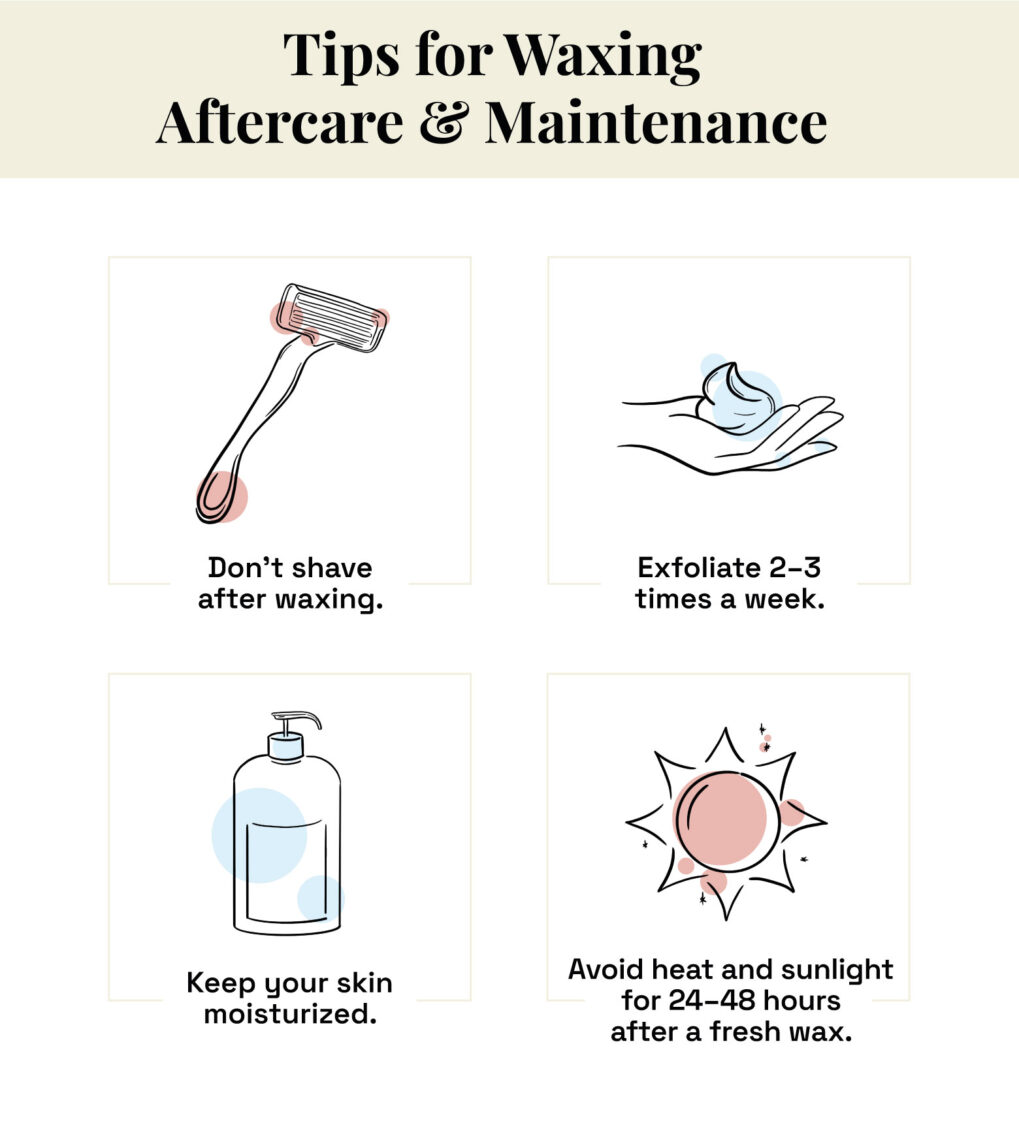
Conclusion
To ensure a smooth waxing experience, having the right hair length, using the right products, and practicing proper care — both before and after your session — make all the difference in the world. Once you figure out how fast your hair grows, setting up a consistent waxing schedule helps you maintain your hair removal routine. Whether you’re a waxing newbie or a pro, StyleSeat can help you book professional services with an esthetician in your area.
